Lessons from Antenna Hanging Part Two - Hardware
I live in a forest, and I’ve hung a fair number of antennas from the trees that surround my home. I’ve learned a thing or two along the way.
In this post I’d like to share what I’ve learned about hardware - the metal and plastic bits and bobs you use along with rope to hold the antenna in the air. That would include eye bolts set into tree trunks, carabiners, rings, cam locks, thimbles, pulleys, and probably other things I can’t think of just now.
Materials - plastic and metal
My general observation is that anything made of plastic or partly of plastic will slowly but surely degrade when left out in the environment where the sun, rain, snow, heat, cold, and wind can get at it. Beyond the direct environmental stress, you can expect that anything outdoors in the forests of the Pacific Northwest will become home to moss, mold, and algae, and will be subject to various forest denizens chewing on it if they can reach it.
So as a general thing I prefer metal. I’ve used plastic carabiners of various sizes and they just never seem to last very long, especially if they’re in direct sunlight and even if they’re made of plastic claimed to be UV resistant.
Not all metals are equal. Galvanized hardware is more common, cheaper, and definitely inferior in terms of longevity out in the environment. Both stainless steel and aluminum do well.
After some disappointment with galvanized stuff, I now just stick with stainless steel or aluminum.
Some hardware with plastic parts seems to fare surprisingly well. In particular, pulleys and other hardware marketed into the marine market holds up really well.
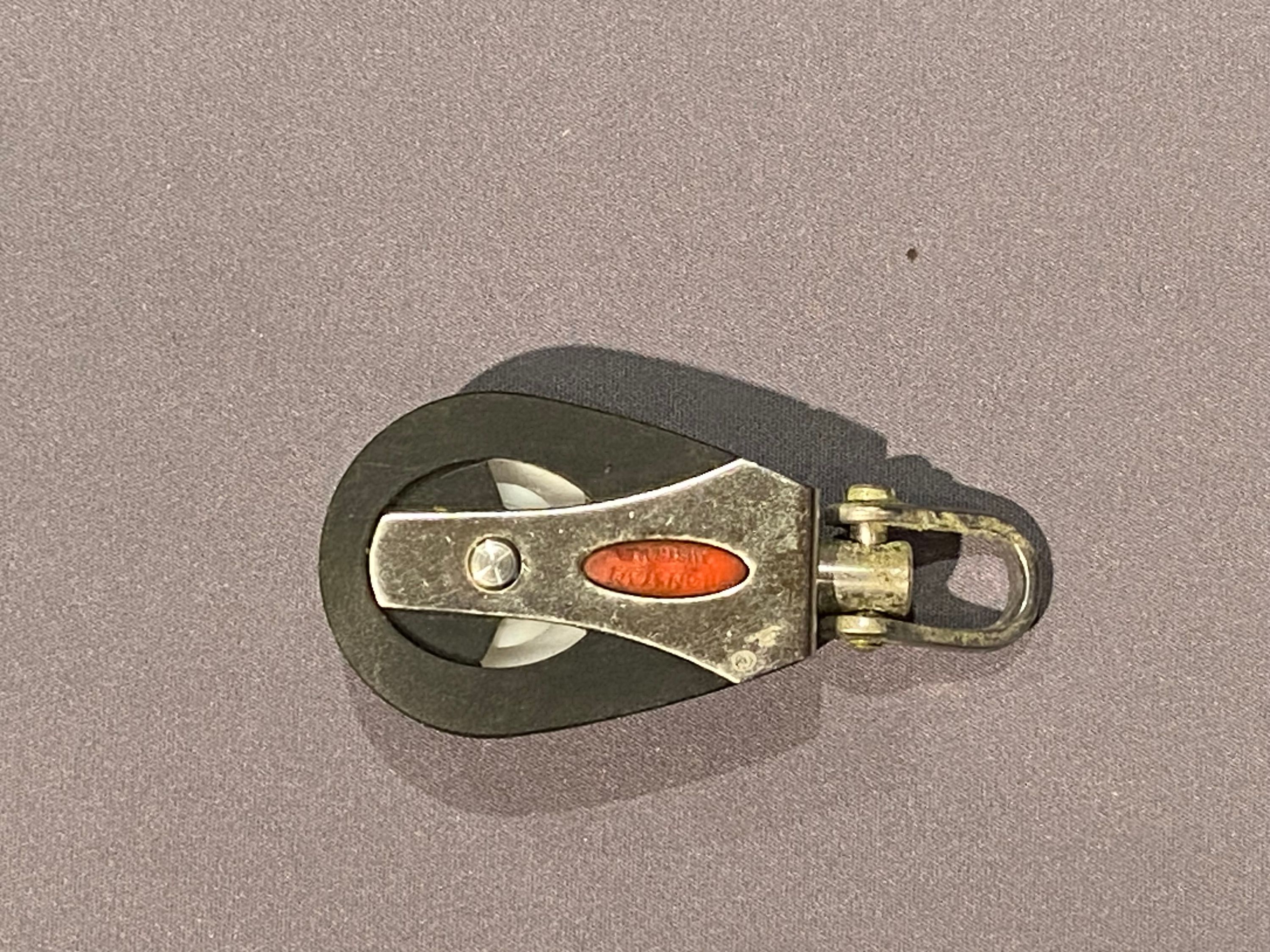 For example, this Ronstan block has been hanging 35 feet up in the air, supporting my OCFD antenna feedpoint, for 8 years. It hasn’t been cleaned up beyond brushing some moss off of it. Scrubbed a bit, it will look good as new, and even without a washing, the pulley runs freely, the swivel swings freely, it basically works fine. I’ve had galvanized hardware store pulleys become unusable in as little as 8 weeks during the PNW rainy season.
For example, this Ronstan block has been hanging 35 feet up in the air, supporting my OCFD antenna feedpoint, for 8 years. It hasn’t been cleaned up beyond brushing some moss off of it. Scrubbed a bit, it will look good as new, and even without a washing, the pulley runs freely, the swivel swings freely, it basically works fine. I’ve had galvanized hardware store pulleys become unusable in as little as 8 weeks during the PNW rainy season.
As a general thing that means that things like rings, links, snap links, and eye bolts I’ll always get stainless steel.
For carabiners it’s stainless steel, aluminum, or aluminum body with a stainless steel gate wire.
Pulleys
Pulleys (aka blocks) are a key component to any suspension for an antenna where you want the ability to raise and lower the antenna.
If your plan is to put the antenna up and then never lower it, I think you’re not thinking things through, because sooner or later you’re going to need to replace coax, or replace the seal on the coax, or deal with some problem with the antenna, and when that happens, you don’t just have the original problem, you now have to deal with getting the antenna down where you can work on it, and then back up to where it can operate. Or, I suppose, you can deal with getting you up where you can do the work, and then deal with getting you back down.
Easier by far to be able to raise and lower the antenna itself, in my view.
Generally I have a rope that goes over a tree, with the pulley attached to that rope, and so by dragging that rope back and forth over the tree I can raise and lower the pulley at the expense of the work needed to drag the rope back and forth.
And then through that pulley I route another rope (a “halliard”), and I attach the antenna or antenna part to that halliard, and by running the halliard up and down through the pulley I can raise and lower the antenna.
So pulleys are a big part of the game.
Not all pulleys are created equal. The pulleys you buy at the local hardware store or at Home Depot or Lowes are generally galvanized crap. The bearings are awful. They don’t even have bearings, they have an axle which will rust and a roller that is galvanized but not circular or even centered properly. The fit of the roller inside the housing is so loose there’s a omnipresent risk that the rope will jump the roller and jam between the roller and the housing, and in doing so will make you want to scream and tear at your hair and garments. Do not buy pulleys at the hardware store.
Go to West Marine, or whatever local marine supply store you have, or even go online and buy pulleys intended to be part of the rigging for actual sailboats. Yes, they cost ten times as much. They are twelve billion times better. Learn from my mistakes and buy the expensive pulleys which do not suck. Trust me on this. You will thank me later, when you wonder if the reason the antenna won’t tune properly is that the coax seal has failed, and you go out, and in ten seconds lower the feedpoint, look at the coax seal, conclude it’s fine, and raise the antenna back to height and get on with finding the problem elsewhere.
Here are the pulleys I’ve settled on as my standard:
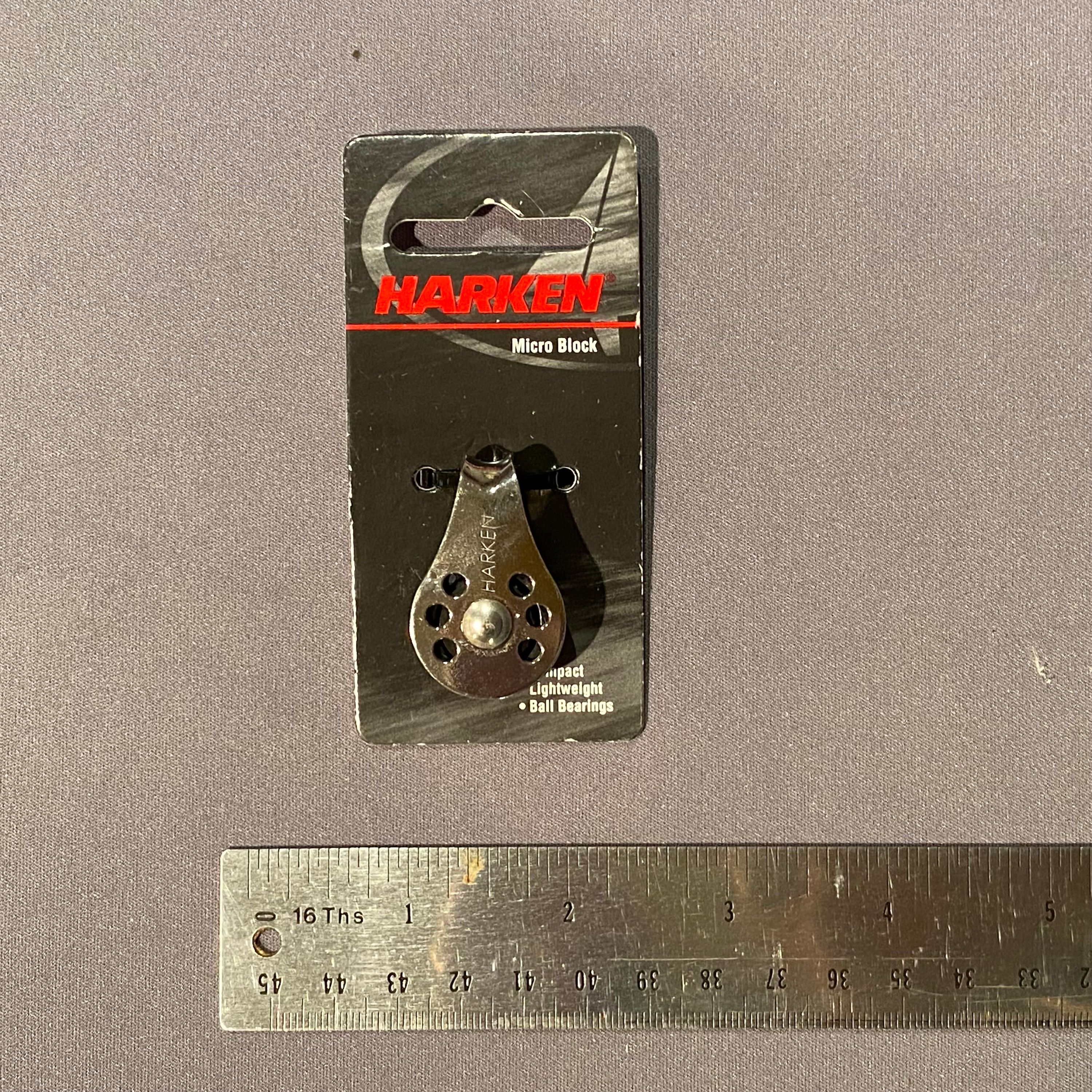 This is a Harken 22mm micro block, part number 224F. You’ll note these don’t have a swivel, and you must thread the support rope or hardware through the frame, as there’s no shackle with a pin so that you can attach it without threading through. These run roughly $16 from various vendors. There’s a version with a swivel shackle but it costs about 12 bucks more (Harken 292F). As a general thing I don’t find the lack of a swivel or shackle to be a problem. In those cases where I really need a shackle, I generally just add a snap link or a quick link to the solution.
This is a Harken 22mm micro block, part number 224F. You’ll note these don’t have a swivel, and you must thread the support rope or hardware through the frame, as there’s no shackle with a pin so that you can attach it without threading through. These run roughly $16 from various vendors. There’s a version with a swivel shackle but it costs about 12 bucks more (Harken 292F). As a general thing I don’t find the lack of a swivel or shackle to be a problem. In those cases where I really need a shackle, I generally just add a snap link or a quick link to the solution.
Carabiners, snap links, and quick links
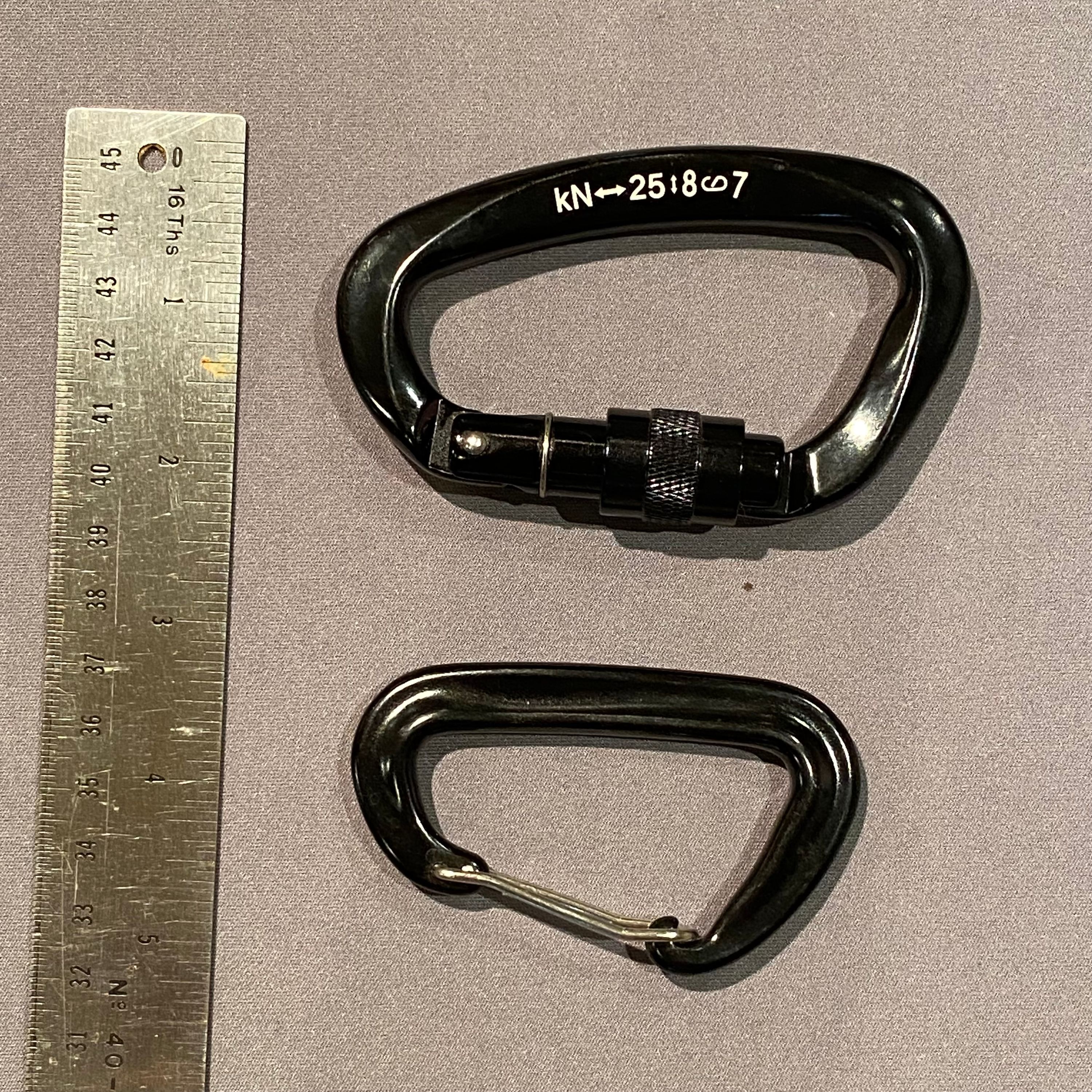
Often you need something to connect two bits of rigging together, either temporarily or permanently. The solution to this problem is a carabiner, or a snap link (which is really just a funny shaped carabiner), or a quick link. The photo above is two carabiners - the top has a threaded locking collar on the gate, and the one on the bottom has what is called a ‘wire gate’.
Carabiners are a rock climbing item, but there are a great many carabiners that are not intended for rock climbing and are more suitable for clipping your water bottle or sunglasses case to your daypack. For antenna rigging, you probably want something in between these two extremes. If you’re suspending a three pound antenna, you don’t need a carabiner rated for 25 kilonewtons (5600 lbs). Sure, you can use such a carabiner, but it’s an expensive item and it’s inconveniently large and probably has features (like a funky twist lock gate) that will just annoy you without delivering useful function.
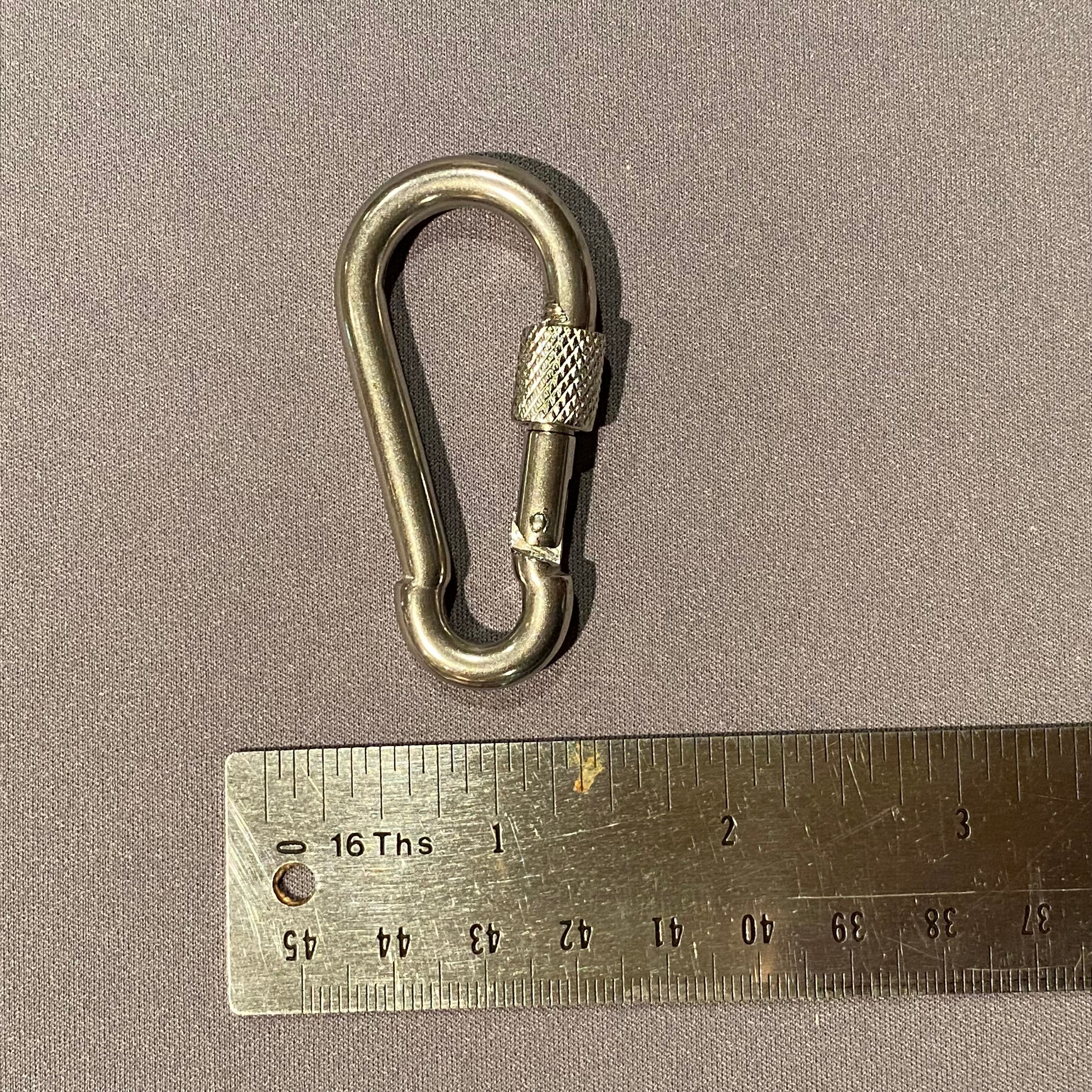
Snap links are great. They’re funny shaped carabiners, and you can buy them made from stainless steel on amazon for cheap. If you don’t need a gate opening of 20+ mm, but you do want a spring loaded gate that is easy to open and closes on its own, you probably want a snap link. They’re available with threaded barrels on the gate that can lock the gate closed, and that’s generally what I buy and use.
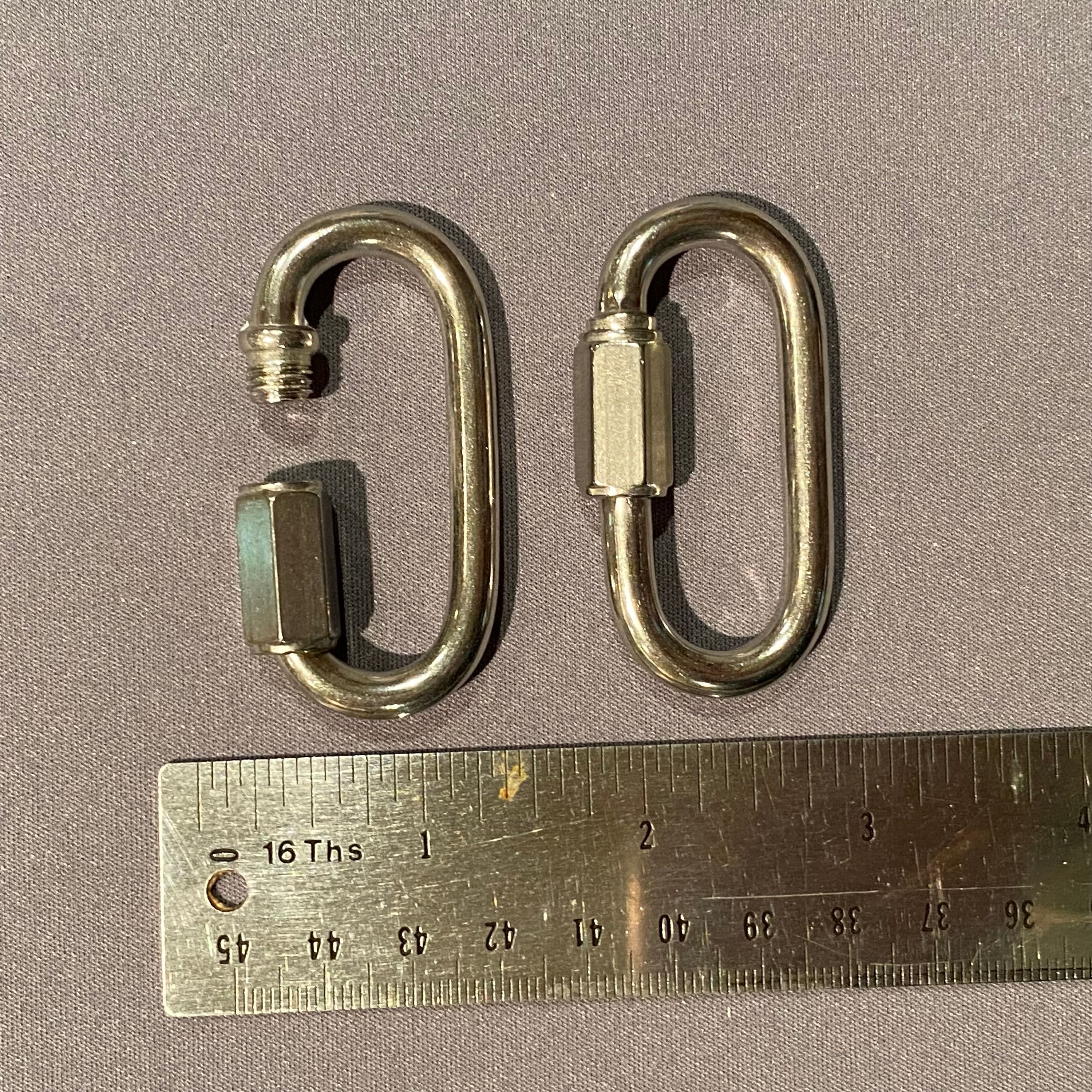
Quick links are sort of like oval snap links except to close the gate, there’s a threaded barrel you screw closed. The gate opening will be narrow (maybe 5-10mm?) but again they’re available in stainless steel, they’re cheap, and the fact that you screw them closed lets you distinguish a connection you intend to be pretty permanent from a snap link intended to be movable.
Thimbles
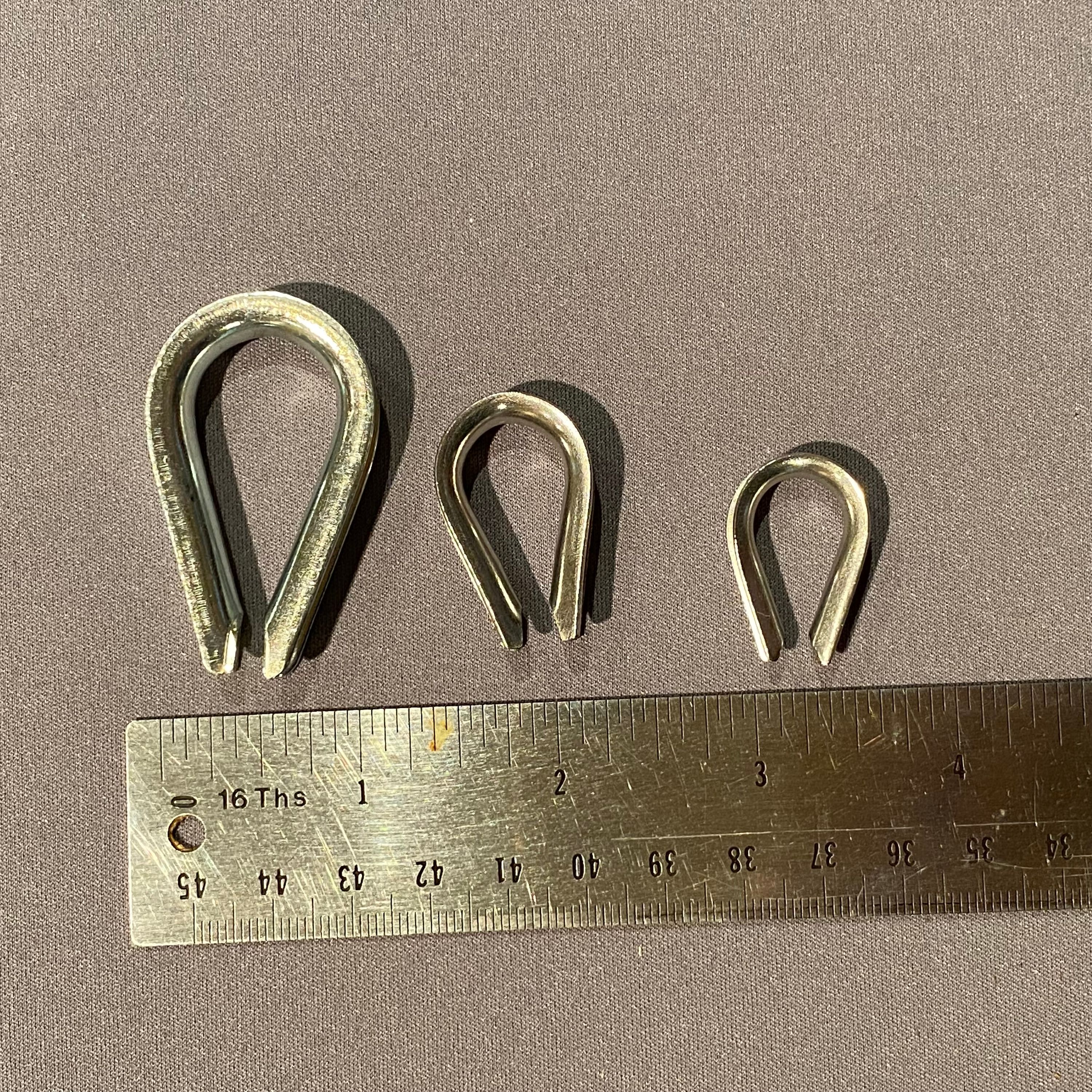
When I first started hanging antennas from trees, I generally just tied a loop in the rope, and any hardware involved just went directly in that loop. It turns out this is a bad practice, because slowly but surely that hardware will chafe the inside of the rope and become a weak spot/failure site for the entire thing.
The best practice is to put thimbles inside the loop, said loop being tight enough to keep the thimble from escaping or shifting, and then the contact is between the hardware and the thimble, and it will take until the heat death of the universe before that thimble wears enough to matter.
At first I struggled with thimbles because it was hard to get the loop tight enough to not let the thimble out of the loop. It turns out my problem was that I was too ignorant about the appropriate knots to use. I now use figure 8 knots to put loops with thimbles at the end of a rope, and alpine butterfly knots to put loops with thimbles in the middle of a rope. Both of those knots are strong, stable, and easy to dress tightly to hold the thimble.
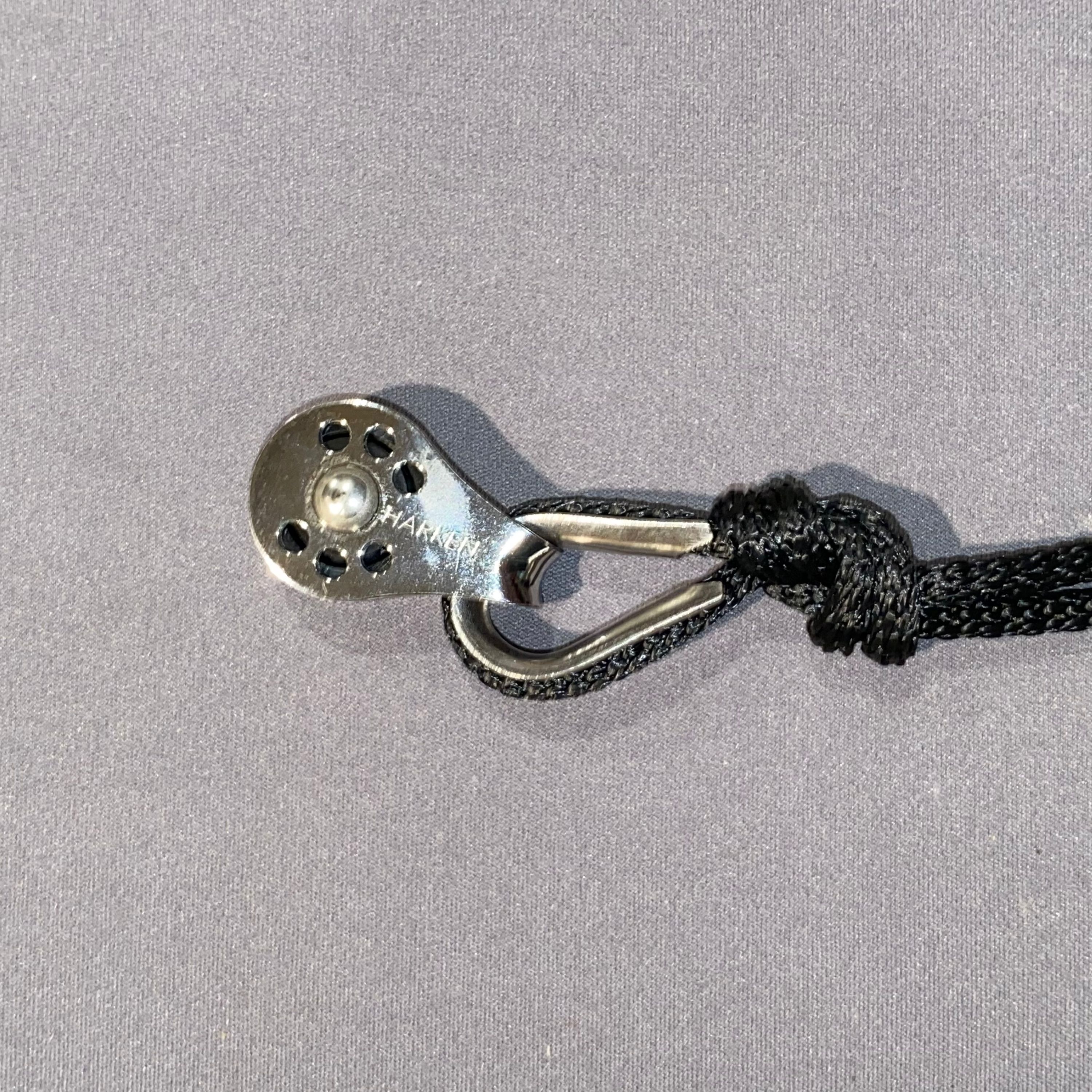
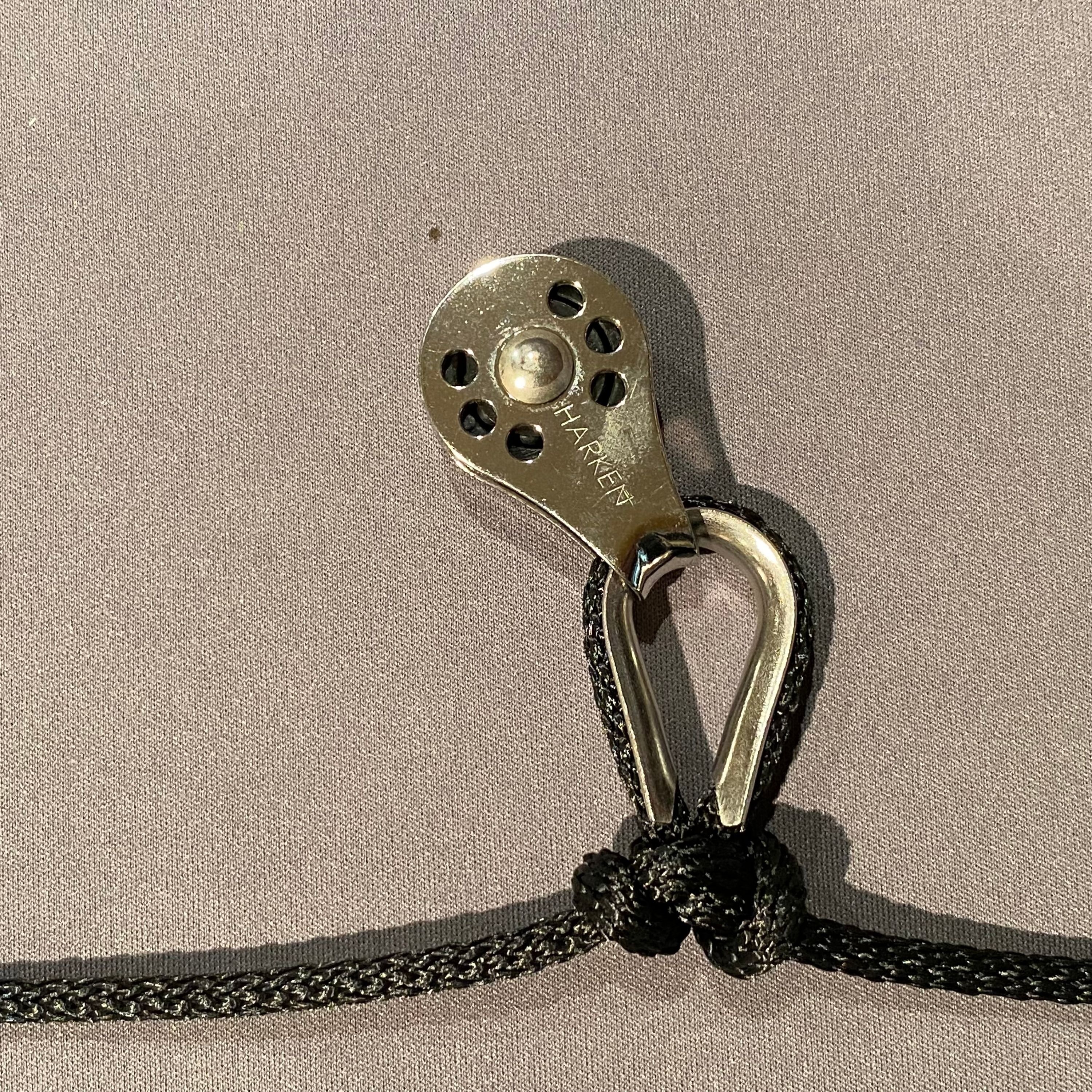
Locking Devices
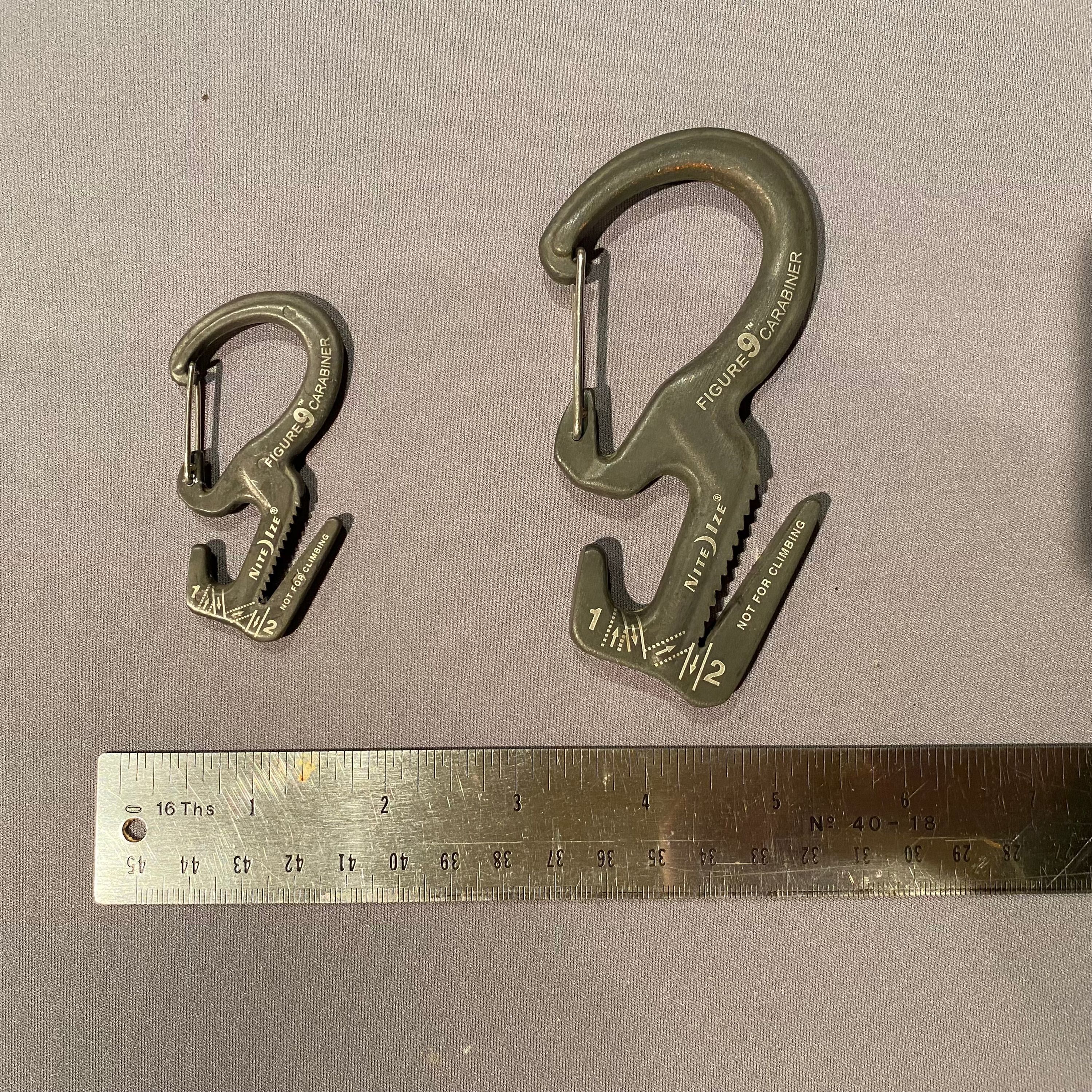
These funny looking things are figure 9 carabiners, made by Nite-Ize. Their job in life is to be snapped into something (in my case, generally an eyebolt screwed into a tree), and then a rope is threaded through around the hook and through the V part with the teeth, and thus the rope is attached to the eye bolt in a way that is reliably permanent but easily removed/adjusted. I use these things all the time, they’re very reliable, easy to use, and hold up really well outdoors - I’ve had some that have been outdoors for 8 years and look good as new.
The smaller ones in the photo are sized for 550 paracord and the larger ones are sized appropriately for 3/16” rope.
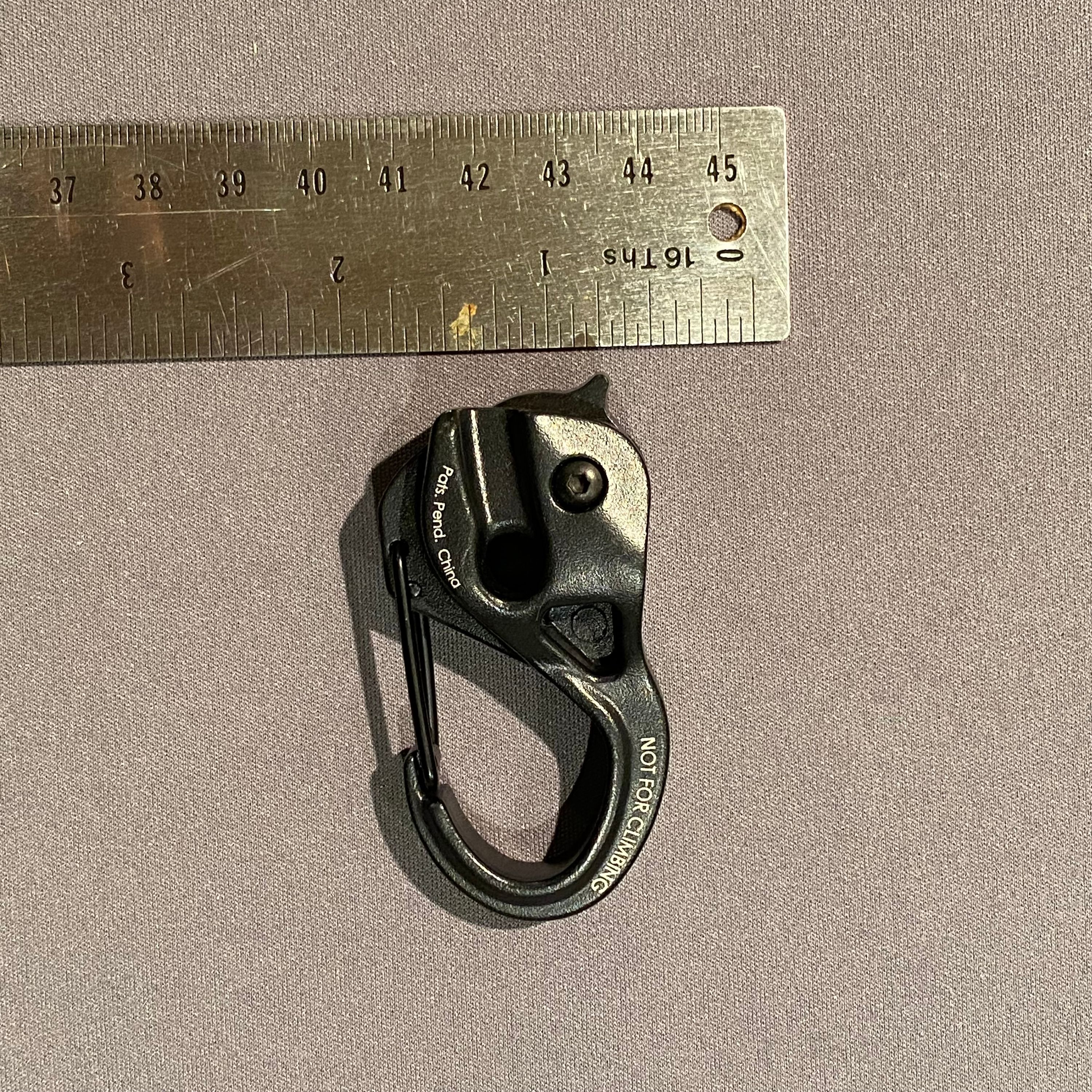
Filling a similar role to the Nite-Ize Figure 9 is the Nite-Ize CamJam. They’re more convenient than the Figure 9 carabiner, but require that they be threaded onto the rope and so they’re great for situations where it’s ok to never have to move the locking device very far along the rope. They come in various sizes and some variants are plastic and have lower load ratings. I’ve used the metal ones for a while, but not long enough to testify that they hold up well outdoors long term. I’ve not used the plastic ones at all.
